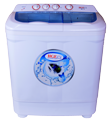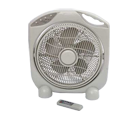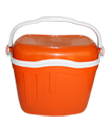Stimulant Withdrawal Symptoms, Stages, Timeline, & Treatment
Each potentially relevant study located in the search was obtained in full text and assessed for inclusion independently by two authors (SS & UK). Complete the form and a treatment advisor will contact you at the number provided. Depression and mood swings may also persist and may need separate treatment to deal with them. Stimulants work by increasing the neurotransmitters dopamine and norepinephrine in the central nervous system, which raises alertness, focus, and attention. During Adderall withdrawal, the brain produces stress hormones, leading to a heightened stress response. This is why someone going through withdrawal might be extra sensitive to everyday stressors.
While people of any gender experience substance misuse, it is more common among cisgender males. It can be challenging to stop using substances, especially after heavy or long-term use, because of substance withdrawal. The fact that stimulant withdrawal is less dangerous should never be a barrier to entering long-term treatment. A few hours to a day after your last dose, certain side effects may start to show up, including anxiety, agitation, and strong drug cravings. After this initial crash, you’ll likely feel exhausted and depressed and may experience eye twitching, irritability, paranoia, and delusions. Several different stages are part of the stimulant withdrawal timeline.
With prescription opiates, withdrawal symptoms begin in 8-12 hours, peak at hours, and can last 5 to 10 days. Symptoms of withdrawal range from sweatiness, shakiness, tremors, and seizures to upset stomach, diarrhea, and vomiting. Irritability, agitation, restlessness, and sleep disruption are common withdrawal symptoms for many drugs, as are muscle cramps, headaches, and changes in blood pressure and heart rate. Drug cravings can be fierce, and fear of withdrawal symptoms often drives continued drug use. While there are few medications that have been evaluated, amphetamine withdrawal seems a reasonable target for developing a medication to aid individuals in instilling amphetamine abstinence. Chronic amphetamine abusers seeking treatment must successfully resolve amphetamine withdrawal when establishing sustained abstinence from the drug.
- The reviewers examined whether the decision to include the data obtained from studies in which most (50%‐75%) participants were amphetamine dependent or abuse affected the results of review.
- But in large doses, these drugs have adverse side effects like anxiety, paranoia, and aggression.
- In two studies (Jittiwutikan 1997, Srisurapanont 1999b), participants were inpatients at a drug dependence treatment center who met DSM‐IV criteria for amphetamine withdrawal.
- Some people are able to stop taking Adderall with mild symptoms or no symptoms.
- Harbor Oaks Hospital, located in New Baltimore, MI, offers treatment for children, adolescents, adults, and senior adults struggling with mental health disorders.
Sensitivity analysis is an analysis used to determine how sensitive the results of a study or systematic review are to changes in how it was done. Sensitivity analyses are used to assess how robust the results are to uncertain decisions or assumptions about the data and the methods that were used. Other than raw data (e.g. death), the outcomes derived from only valid scales were included in the reviews. In this review, a valid scale means a scale that has been published in a scientific journal. Harbor Oaks Hospital, located in New Baltimore, MI, offers treatment for children, adolescents, adults, and senior adults struggling with mental health disorders. Treatment of withdrawal depends on the substances used, the symptoms, and the severity of symptoms.
While the drugs may vary, their withdrawal symptoms are similar; however, withdrawal symptoms will differ from one person to another based on several factors. Stimulant drugs are classified as dopamine reuptake inhibitor (DRI) drugs, which block the action of the dopamine transporter. It results in increased concentrations of dopamine, and when someone tries to stop, it can cause them to feel “drained” and fall into a deep depression. Unfortunately, people who stop their stimulant use may also deal with terrible anxiety and the feelings that they can’t stop. Let’s take a look at more of the types of stimulant drugs that are available illegally and by prescription. It depends on your genes, your overall physical and mental health, the type of stimulants you use, and your family history of substance abuse.
Tremors may begin 5-10 hours after the last drink and typically peak 24 to 78 hours after the last drink but can last for several weeks. In the immediate aftermath of discontinuing heavy alcohol use, the brain has not yet had time to adapt to the absence of alcohol. The neural hyperactivity, now unopposed by alcohol, creates the shakes, which decline as the brain accommodates to the absence of alcohol. Medication-assisted treatment (MAT) does not, by itself, cure addiction, but it allows people to focus on and develop skills for sustained recovery and rebuilding a meaningful life. Buprenorphine treatment does not require hospitalization, can be prescribed by practicing physicians, and is typically available in conjunction with counseling and behavioral therapy.
One rationale guiding selection of medications for amphetamine withdrawal involves using a medication to stabilize dopamine, norepinephrine or serotonin neurotransmission to provide relief from withdrawal symptoms. According to this rationale, the neurobiology of the amphetamine withdrawal syndrome and its relief would be related to the cumulative effects of repeated exposure of neurons to high dose amphetamines (Meredith 2005). Initial “highs” mediated by extracellular dopamine and norepinephrine levels in striatum (midbrain) become attenuated. Aspects of the withdrawal syndrome may be mediated by different neurotransmitter systems that include dopamine, norepinephrine and serotonin. Diminished dopamine synaptic transmission in acute withdrawal may be responsible for anhedonia and psychomotor retardation.
What Happens to Your Body During Drug Withdrawal?
These therapies focus on healing the mind, body, and spirit and can relieve stress and promote overall well-being. If you’re using the Food and Drug Administration (FDA)-approved semaglutide weight loss formulation, Wegovy, detoxing from benzos: how to do it safely a guide it can be tempting to stop taking it without consulting your doctor once you’ve lost weight. Stopping completely, or trying to self-taper your dosage, could result in worse withdrawal symptoms or side effects.
Symptoms can range from mild to severe, and withdrawal may even result in death. It is important to seek help from a qualified healthcare professional before reducing or stopping substances and to treat withdrawal symptoms. Marijuana withdrawal symptoms usually last a couple of weeks, but some may remain for several months. The severity of symptoms can range from mild to severe, and it is important to seek professional support for the emergence of symptoms such as depression.
Stimulants are a class of psychoactive drugs that when used stimulate the body, which results in increased activity and alertness. Most commonly stimulants are prescribed by a licensed physician for the treatment of attention-deficit/hyperactivity disorder and narcolepsy. Some of the most common stimulants prescribed include amphetamines such as Adderall and Ritalin, however there are other illegal substances like cocaine and methamphetamines that are also considered to be stimulants.
Stimulant Addiction Treatment
Stimulants like methamphetamine and cocaine rarely, if ever, have medical purposes. Others, like crack cocaine or crystal meth, have no medical purpose at all. All of these substances are highly addictive and pose significant health risks when abused.
Signs and symptoms of stimulant addiction
Medical detox is one of the most common forms of detox support and can occur in both inpatient or outpatient settings. The Recovery Village specializes in individualized detox and addiction treatment. Adderall withdrawal can happen to anyone who takes the drug regularly, even if they’re taking it as directed. Often, the symptoms are more noticeable for those who abuse or misuse the drug. Other situations that can lead to Adderall withdrawal include medication dosage changes. By Corinne O’Keefe OsbornCorinne Osborn is an award-winning health and wellness journalist with a background in substance abuse, sexual health, and psychology.
Withdrawal symptoms set in, peak, and then decline over the next week to 10 weeks, and can include anxiety, severe drug cravings, lethargy but erratic sleep, and emotional instability. The extinction phase, how to pass a urine drug test with baking soda of episodic cravings, dysphoria, and poor concentration, can extend to 28 weeks. There aren’t specific stimulant detox medications approved like there are with other drug classes, such as opioids.








